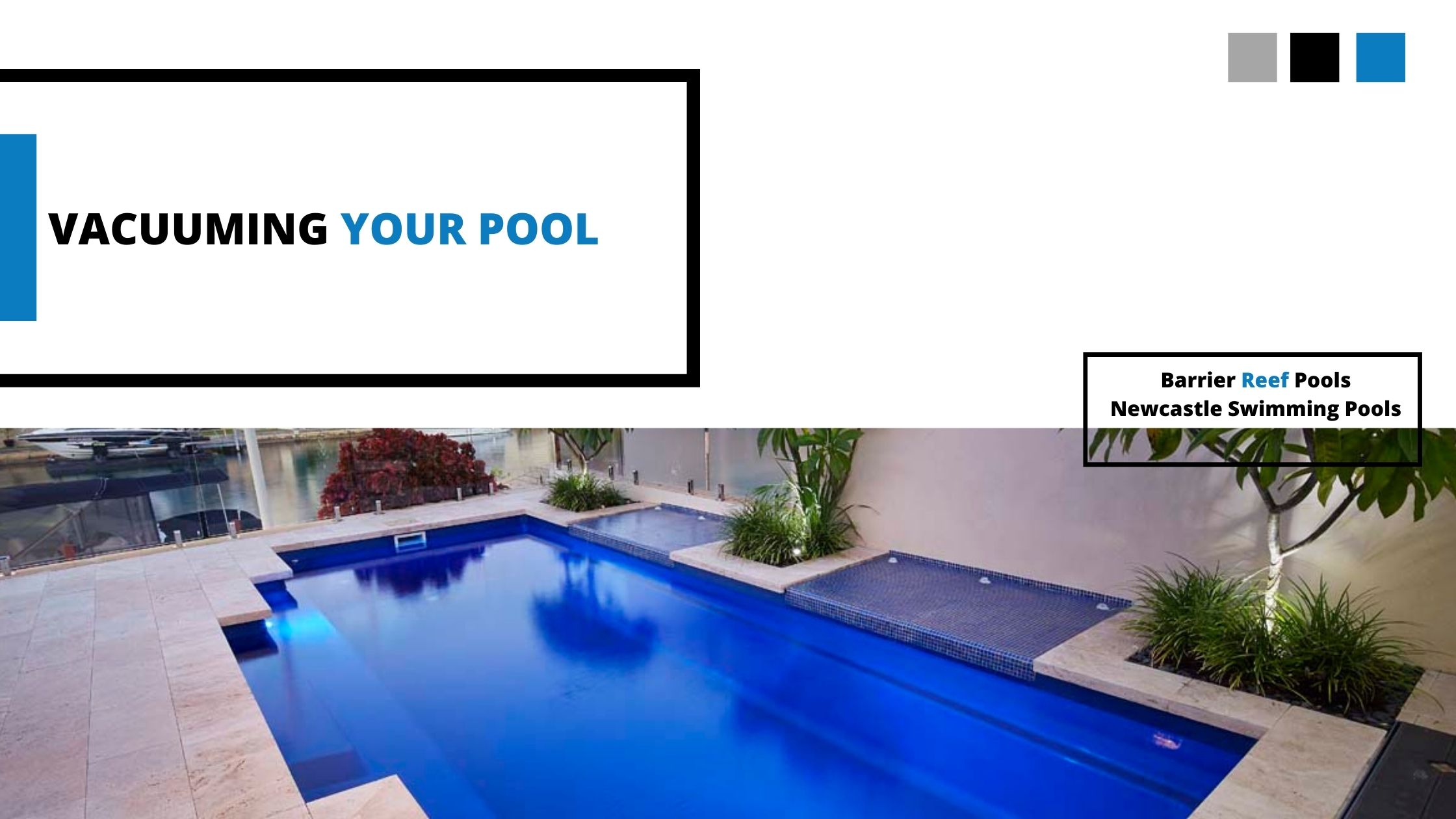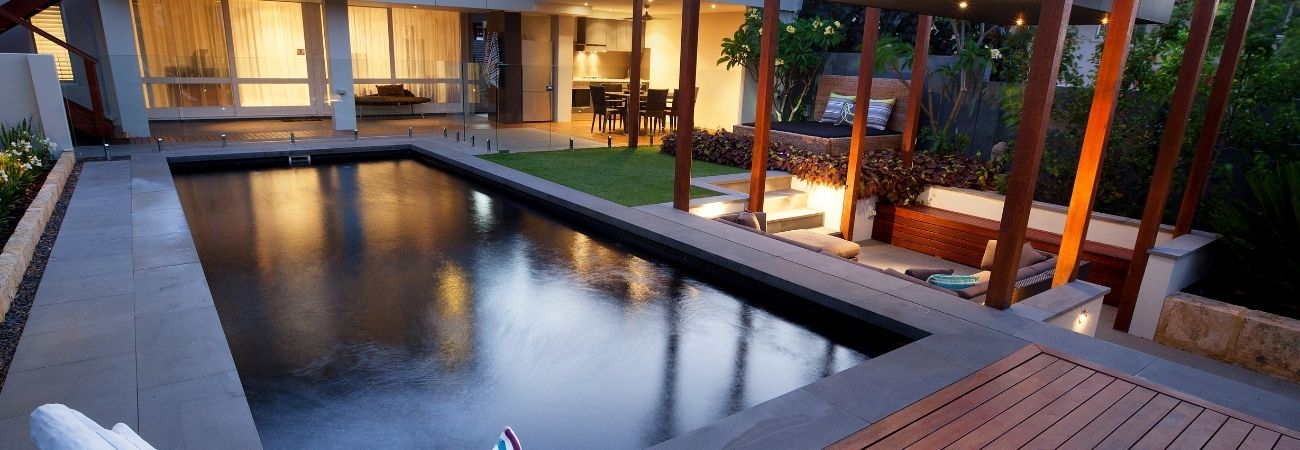Vacuuming Your Pool - An Informative Guide To Everything You Need To Know
Vacuuming your swimming pool is a job that must be done often to keep your equipment working as it should and your pool clean and safe to swim in. So, what’s involved exactly? Well, you need a few pieces of equipment and the rest we’ll explain throughout this post. Here’s everything you need to know about vacuuming your pool.

Equipment
Before you can vacuum your pool, you need the right equipment. This is what you should have:
Telescopic pole – A telescopic pole is an essential pool accessory and can be used for many pool cleaning tasks.
Vacuum head – A vacuum head attaches to your telescopic pole. It is a plastic contraption with rollers or a brush on the bottom. Vacuum head attachments are universal and can fit on almost all telescopic poles.
Vacuum hose – You need a vacuum hose. One end will attach to your vacuum head, the other to your skimmer. Ensure your hose is long enough to reach the entire length of your pool.
Skimmer plate – A skimmer plate attaches to the skimmer and your vacuum hose connects the skimmer plate.
Setting your vacuum up
Setting up your vacuum is simple, you can do it following these seven easy steps:
Click your vacuum head onto your telescopic pole.
Turn your pump off.
Lift your skimmer lid, put your skimmer plate into the skimmer and fasten it into position.
Attach your vacuum hose to the vacuum head, attach the other end of the hose onto the skimmer plate.
Select your filter setting. On your pump, you will find a lever. Keep it on the filter setting if the pool only needs a light once over. If there is a substantial quantity of leaves and other debris, turn the lever to the waste setting, this will send the water directly down the drain instead of through the filter. You may need to top your pool water up with a hose when using the waste setting.
Next, you can start vacuuming. Pool vacuuming is much like normal household vacuuming, although you just go a tad slower, so you don’t mix the dirt through the water when passing over it. Make sure you run the vacuum over all surface areas of the pool and repeat if necessary. If the pool is exceptionally dirty, you might have to remove the skimmer basket and empty it to ensure it doesn’t affect the suction. Make sure you turn the pump off before lifting your skimmer plate to remove the skimmer basket.
Once you’ve finished vacuuming the pool, you can disassemble the hose from the vacuum head and the hose from the skimmer plate. Empty your skimmer and return your lever to its original setting.
Test your water to ensure that it doesn’t need rebalancing. Adjust if necessary.
Ideally, you should do this weekly and more so if there has been wind, rain etc and there is more debris in your pool than normal. It is best to do this as soon as you can rather than leaving it, as the dirt and contaminants will throw your pools chemistry levels out and that can be a painstaking task trying to rectify it.

We know what you're thinking, there has to be an easier way, right?
Well, of course, there is! Manually vacuuming your pool is not the only way you can keep it looking fantastic. You could hire a professional pool cleaner to do it for you or you can invest in an automatic cleaner. They automate your pool vacuuming so you don’t have to. While they are more costly than your traditional manual vacuum, they can save you a tonne of time on pool cleaning, so are they worth it? Yes, if you want to keep your pool maintenance to the minimum. The good news is they aren’t as expensive as you may think with options starting as little as $200. Here is a basic rundown of the three main types of automatic pool cleaners:
Side suction cleaners
Starting at the cheapest end of the automatic pool cleaning scale is a side suction cleaner. They attach the same way as a manual vacuum via the skimmer plate using a vacuum hose and work virtually the same, except you don’t have to do anything. They navigate across the surface of the pool picking up debris and dirt as they go.
Pressure side cleaners
Pressure side cleaners are more expensive than suction-side cleaners, however, they offer a supreme clean that simply cannot be matched by a side suction cleaner. Unlike manual vacuums and side suction cleaners that get their power from the skimmer, pressure-side cleaners attach to the return jets of your pool instead to accelerate their way across the pool. The dirt and debris are collected in their own cleaning bag that is attached to the device.
Robotic Pool Cleaners
Robotic pool cleaners are the most advanced automatic pool cleaning device and whilst expensive, they are the most effective and energy-efficient. They have advanced brushing technology integrated into the device and can clean the entire pool with ease, including the steps. Robotic cleaners are different from the other cleaners as they use electricity to function and it is so minimal – only around the same as a light globe. They are a worthwhile investment for the long-term cost-saving benefits they offer.

In-Floor Cleaning Systems
The latest pools have the option of a built-in cleaning system, and they are the ultimate luxury when it comes to pool cleaners. They are built into the floor of your pool and offer the highest water quality and the most superior clean, all while requiring virtually no effort from you. Built-in cleaners circulate every inch of your pool water and propel water towards the drain taking debris and dirt with it, which is highly effective at preventing algae from growing. This type of cleaner can only be installed in the construction process and cant be added later, unfortunately, so if its something you’d consider, make sure you let your pool builder know when in the design phase.
Do I still need to manually vacuum my pool if have an automatic cleaner?
Automatic cleaners do a great job of the day to day pool cleaning, however, there will be times when you should manually vacuum your pool as the cleaner alone won’t be enough. Heavy storms, wind or excessive leaf fall are some of the few occasions when it pays to manually give your pool a vacuum along with running your cleaner. This will ensure that external contaminants haven’t had a chance to break down and cause imbalances in your water. If this happens, it can turn your water cloudy or green quite quickly. This can be time-consuming and costly to fix, so it’s not worth letting it get to this stage.
We hope after reading this post you have an idea of what pool vacuuming is and how it works. If you have any questions about vacuuming your swimming pool, feel free to get in contact with our fibreglass pool professionals here at Newcastle Swimming Pools, we’d love to help if we can.
